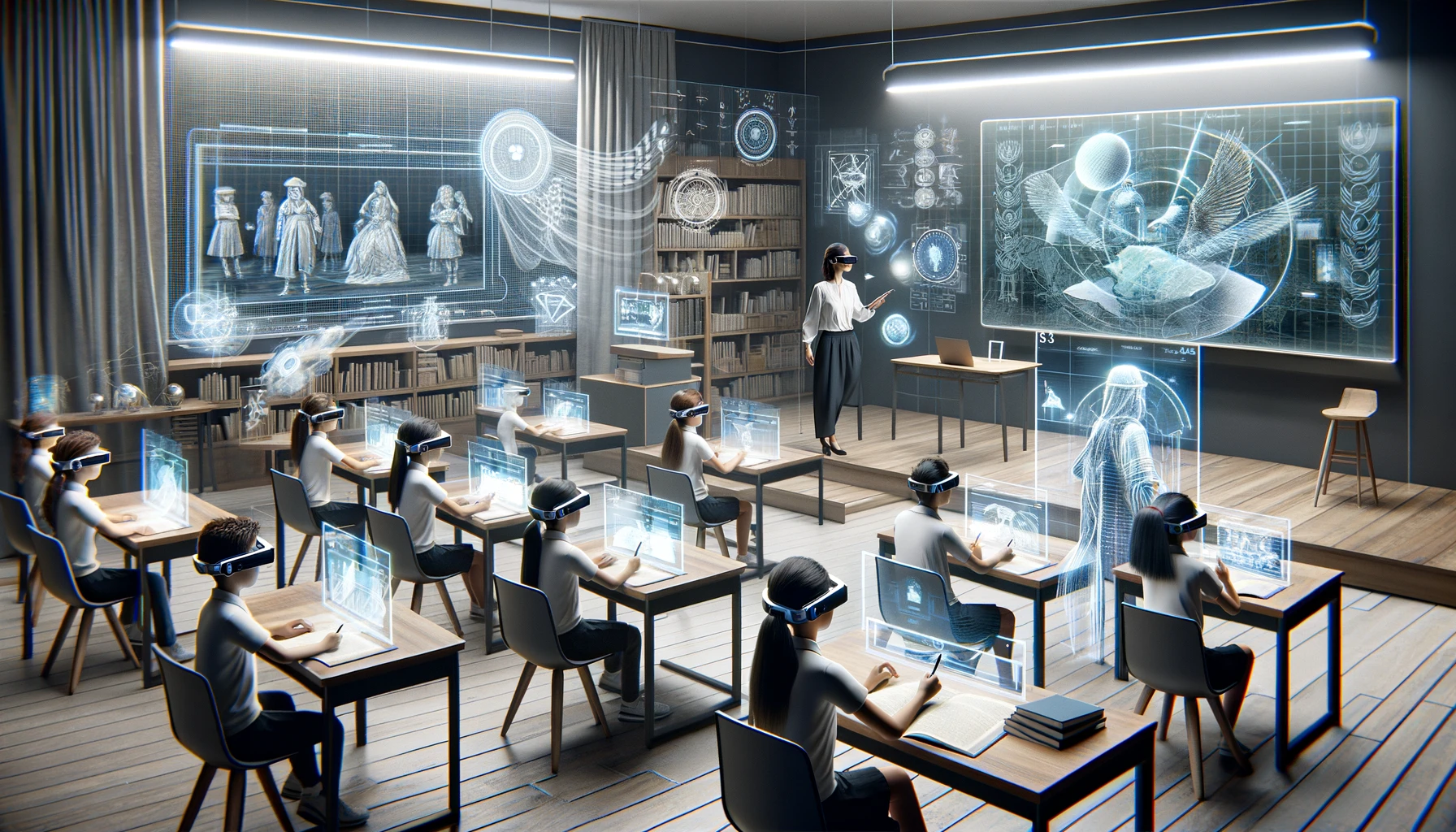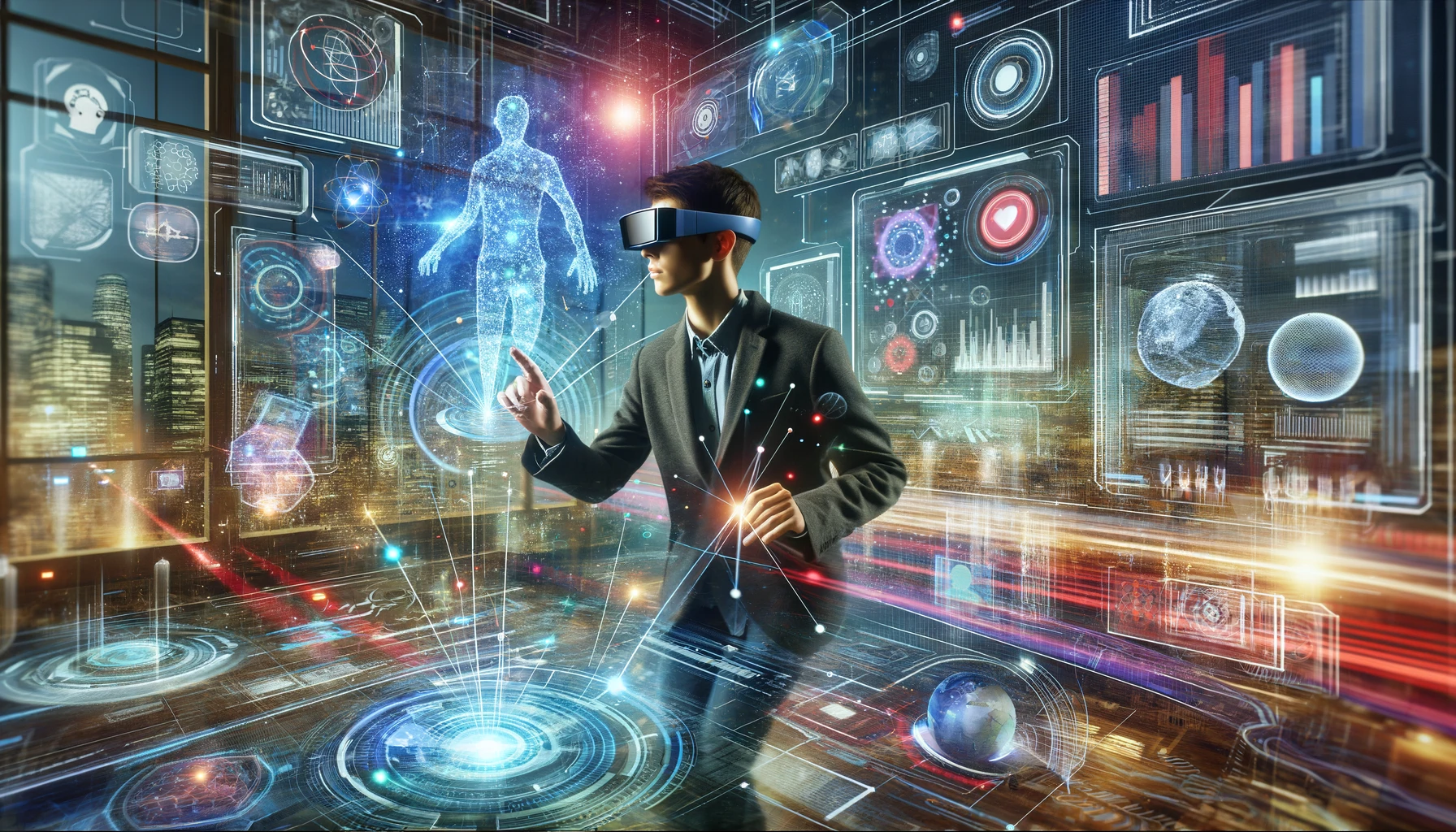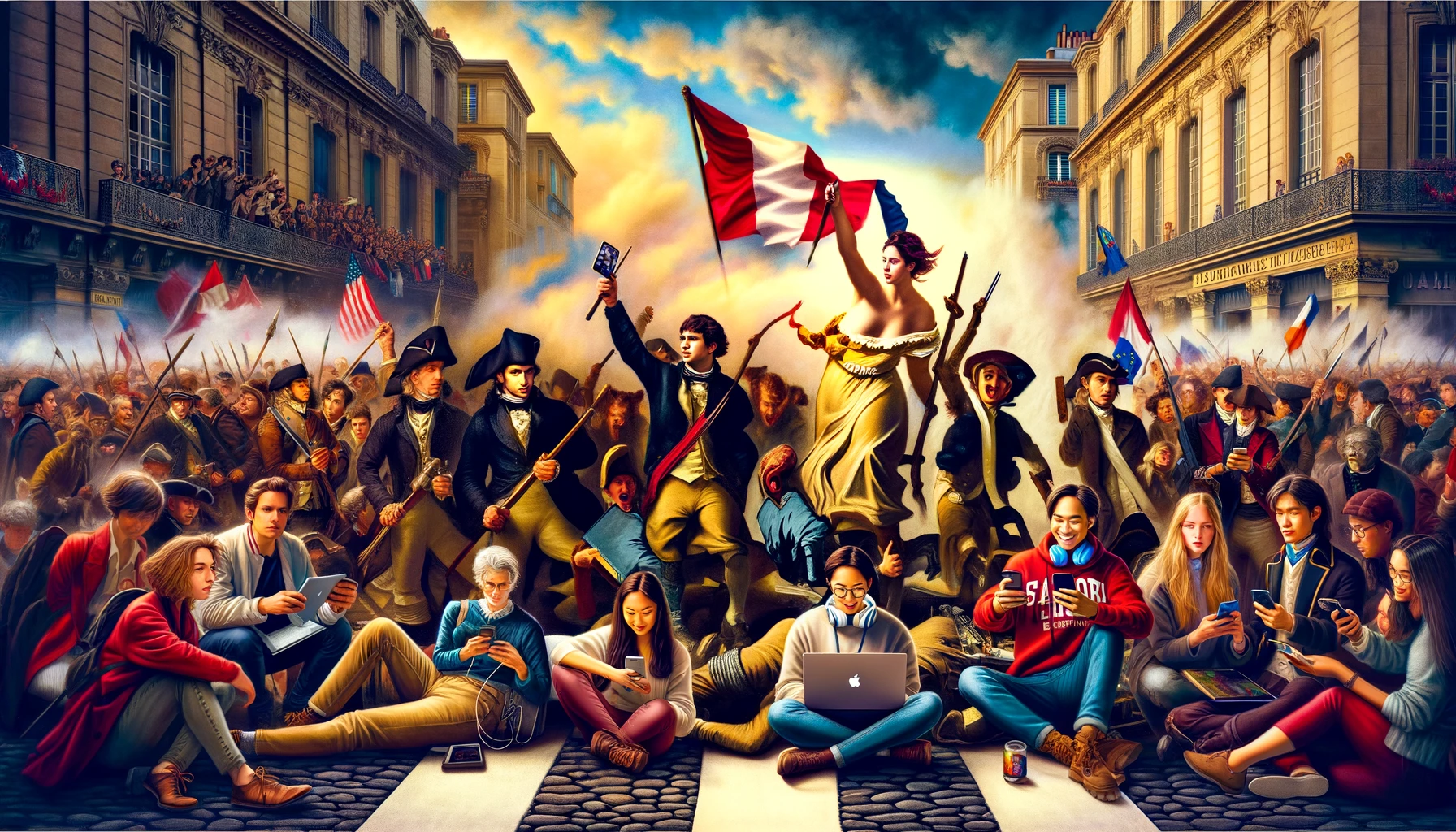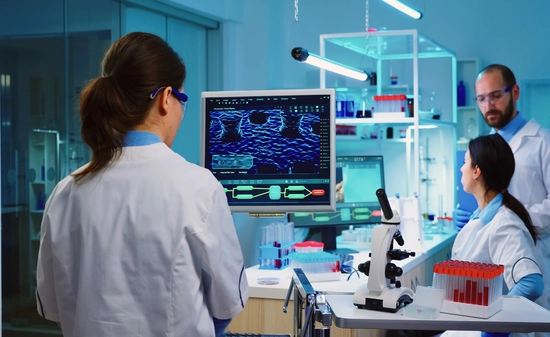Step Into History: Walk Alongside Lincoln in the Augmented Classroom of Tomorrow!
Once considered an almost irrelevant novelty, Augmented Reality (AR) is now a pillar of educational innovation, fundamentally altering how educational content is delivered and experienced across various disciplines, from Medicine to History and Literature. By overlaying digital data onto the real world, AR enables students to interact with 3D models that bring complex concepts to life, enhancing their understanding and the retention rate. Far away truth from merely increasing the existing education methods, AR is pioneering an educational revolution, reshaping traditional learning paradigms and making the educational process more engaging and effective.
The Impact of AR in Education
Integrating augmented reality (AR) into educational settings marks a paradigm shift in pedagogy, significantly enhancing how students deliver and experience content across various learning environments. This revolutionary technology has proven particularly transformative in online learning, where it introduces a layer of interactivity and engagement traditionally absent in e-learning platforms.
AR allows students to visualize and manipulate complex, abstract concepts through immersive simulations, bringing academic subjects to life in ways previously unimaginable.
Enhanced Learning through Dynamic Interactivity
AR's ability to overlay digital information onto the physical world enables students to explore and interact with educational content in real time. This capability is crucial in science, engineering, and mathematics, where spatial and visual learning is essential. For instance, AR can make phenomena that are too small, too large, or too complex for traditional classroom demonstrations accessible and manageable, aiding in understanding and significantly increasing student engagement and curiosity.
Empirical Support for AR's Educational Benefits
Studies consistently show that AR enhances learning outcomes by making lessons more engaging and interactive. Meta-analyses highlight medium to high effect sizes for AR interventions in education, with reported improvements in student motivation and retention rates.
The effectiveness of AR is obvious in enhancing online learning environments, where it transforms passive content consumption into an interactive experience that students find more engaging and informative.
AR in Online Learning Platforms
The adoption of AR in online learning platforms has revolutionized the delivery of digital education. It provides dynamic, immersive environments that engage students way more effectively than static video lectures and text-based materials. This shift towards integrating AR into e-learning platforms retains and excites student interest, leading to better learning outcomes and higher information retention.
Shortly said, AR is redefining educational boundaries, making complex and abstract concepts more tangible and understandable.
Through its integration into physical and virtual classrooms, AR fosters a rich, interactive learning environment that enhances traditional educational methods and prepares students for a future where digital fluency is instrumental.
Real-World Applications and Case Studies
Augmented Reality (AR) profoundly alters learning and interaction across various fields, with its real-world applications proving vital in fields as diverse as medicine, engineering, and cultural heritage.
Medical Training
AR offers a revolutionary approach in medical education by simulating complex surgical procedures, allowing medical students to practice and refine their skills without the risks associated with live operations. A few years back, the Cleveland Clinic started utilizing AR to enhance the training of its cardiovascular surgeons, providing them with a real-time, three-dimensional view during surgeries, aiding in educational processes and enhancing operational accuracy and patient outcomes.
Research heavily backs up these immersive learning' s benefits indicating that AR can increase the precision and safety of surgical procedures by overlaying critical virtual data onto the physical operation fields.
Engineering Education
AR's impact is equally significant in engineering education, where it bridges theoretical knowledge and practical application. At Stanford University engineering students use AR to interact with virtual models of machinery and systems right in their classrooms. This hands-on approach deepens understanding of complex concepts like circuit design and mechanics. For example, we can highlight that using AR applications enables students to see the effects of changes in circuit design in real-time, a process detailed in studies to visualize and manipulate electronic components in a lab setting, deepening learning efficiency and engagement.
Cultural Heritage Exploration
Exploring cultural heritage through AR brings history to life, allowing users to interactively immerse themselves in historical contexts. Museums worldwide, such as the British Museum in London and the Smithsonian Smithsonian in Washington, D.C., have adopted AR to transform how visitors engage with history. These institutions use AR to overlay digital information on artifacts, providing background stories and historical facts that enrich the visitor experience. For example, the British Museum uses an AR application that allows visitors to visualize ancient Greek temples in their original locations and forms, offering a deeper appreciation and understanding of their architectural ingenuity and cultural significance.
These experiences illustrate how AR is supplementing and revolutionizing traditional educational methodologies. By providing an interactive, immersive, and enhanced learning experience, AR helps bridge the gap between theoretical knowledge and practical application, preparing a future-ready learning environment that is dynamic and engaging.
In other words, AR is supplementing and revolutionizing traditional educational methodologies. By providing an interactive, immersive, and enhanced learning experience, AR helps bridge the gap between theoretical knowledge and practical application, preparing a future-ready learning environment that is dynamic and engaging.
Business Benefits of AR in Education
Integrating Augmented Reality (AR) into educational and training programs offers profound business benefits beyond the traditional classroom setting. These advantages reshape how institutions and companies approach learning, training, and development strategies.
Cost-Effective Training Solutions
One of the most compelling advantages of AR in education is its cost-effectiveness. AR reduces the need for physical resources, which can be particularly expensive in specialized fields like medicine or engineering. In some cases, AR can simulate these at a fraction of the cost instead of using actual machinery or medical models. Additionally, AR eliminates the need for physical presence, reducing travel expenses for training that traditionally requires geographical mobility. Over time, these savings can be significant, making AR a wise long-term investment for educational institutions and businesses.
Immersive Learning Experiences
AR and Virtual Reality (VR) create highly immersive learning environments that engage multiple senses, offering a more effective learning experience than traditional methods. This immersive quality helps learners understand complex concepts by visualizing them in three dimensions, which is especially beneficial in architecture, engineering, and science disciplines. The immersive nature of AR can transform a routine training session into an interactive and engaging adventure, making learning more effective and enjoyable.
Enhanced Safety and Risk Management
In fields where practical training involves considerable risk—such as chemical engineering, healthcare, and heavy machinery operation—AR provides a safe platform for learners to gain experience without the actual dangers.
Trainees can perform hazardous tasks or resolve emergencies within a controlled virtual environment that closely mimics real-life conditions but without risks. Not only do these methods ensure safety and build confidence, but they also increase skills and knowledge in handling real-world challenges.
Real-Time Feedback and Adaptability
AR systems can provide immediate feedback to learners, an invaluable feature in educational settings. This real-time response allows students to correct mistakes and understand their errors on the spot, reinforcing learning and improving retention rates.
AR systems can adapt to the individual's learning pace, customizing the experience to meet each learner's unique needs and abilities.
Scalability and Flexibility
AR solutions are highly scalable, meaning they can be expanded or reduced according to the specific needs of an educational program or training session. They are also flexible enough to be tailored to different educational or training scenarios, from simple tasks to complex simulations. This scalability and flexibility make AR an attractive option for organizations of all sizes, enhancing their ability to deliver high-quality education and training across various disciplines.
Preparing for Future Technologies
By integrating AR into current educational practices, institutions are enhancing learning and preparing students for a future dominated by digital and augmented technologies. AR in education fosters technological fluency and adaptability, crucial skills as new technologies emerge.
In summary, deploying AR in educational settings sets the beginning of a new era in training and development. It offers a blend of safety, interactivity, cost efficiency, and adaptability, making it an essential tool in modern educational strategies. As technology advances, the role of AR in education will become more pivotal than we ever thought, and is most likely to redefine the core meaning of learning, and train students and trainees to face this increasingly digital world.
Challenges and Limitations
While adopting Augmented Reality (AR) in education brings transformative benefits, several challenges and limitations can hinder its global implementation.
Technical and Financial Barriers
One of the primary challenges in implementing AR is the requirement for substantial hardware and software investments. The technology demands high-performing, often expensive equipment to function effectively, including advanced AR glasses and compatible devices. Naturally, the high-cost related to AR implementation can be a significant obstacle for institutions with limited budgets. Additionally, the software required to create and run AR applications needs continual updates and maintenance, which adds to the long-term costs.
Digital Divide
The digital divide remains a critical concern in incorporating AR into education. When we say divide, we refer to the gap between individuals with access to modern information and communication technology and those without. For students in regions with limited access to the internet or advanced computing devices, the benefits of AR are out of reach, which can exacerbate educational inequalities. Ensuring equitable access to AR technology is essential to prevent widening this gap.
User Experience and Accessibility
The effectiveness of AR also depends heavily on the design of the user interface and the overall user experience. Poorly designed applications can lead to confusion and a steep learning curve, which may deter educators and students from using the technology. Additionally, AR applications must be accessible to all users, including those with disabilities, which requires careful design to ensure they are inclusive.
Privacy and Data Security
As with any technology that collects and processes data, AR applications raise concerns about privacy and data security. Educational AR applications often require sensitive information about users to create personalized learning experiences, which must be protected from unauthorized access and breaches.
Teacher Training and Curriculum Integration
Teachers's training becomes critical to ensure effective AR integration in learning methods and involves understanding how to operate AR devices and integrating AR tools into the curriculum effectively. Without proper training and support, the potential of AR to enhance learning can be severely limited.
Technological Reliability
AR technologies still face issues related to reliability and accuracy. Misalignments between real-world and augmented elements can disrupt the learning process and diminish the educational value of AR experiences. Continuous improvements in AR technology and feedback from educational implementations are vital to address these concerns.
Preparing for Future Needs
Lastly, as AR technology evolves, educational institutions must keep pace with the latest developments to ensure their applications and tools remain relevant and practical. To reach this stage, it is mandatory to ongoingly invest in technology updates and professional development for educators.
In summary, while AR presents a promising future in education, addressing these challenges is essential for its successful and equitable integration into learning environments.
Practical strategies to mitigate these issues include:
- Investing in robust and accessible technology infrastructure.
- Enhancing user experience design.
- Ensuring rigorous data protection.
- Providing comprehensive training for educators.
The Future of AR in Education
Integration with AI and Machine Learning
The convergence of Augmented Reality (AR) with Artificial Intelligence (AI) and machine learning heralds a future where educational tools are interactive and profoundly adaptive. AI's ability to analyze and respond to individual learning patterns in real-time will personalize AR content, dynamically adjusting to each student's pace and comprehension levels.
This integration promises highly adaptive learning environments, potentially revolutionizing educational efficacy and engagement by tailoring experiences to meet diverse educational needs uniquely.
Advancements in Sensory Immersion and Interactivity
AR rises with the promise of significant advancements in sensory technologies and interactivity. We can already expect a broad range of innovative features like haptic feedback and advanced voice recognition that will enhance virtual educational environments' tactile and auditory feedback.
Such enhancements will make remote labs and simulations much more realistic and immersive, providing students with hands-on experiences akin to physical labs, thereby bridging the gap between virtual learning and real-world application.
Expansion into New Educational Frontiers
As AR technologies evolve, they are expected to broaden their impact, particularly in the remote and special-needs education sectors. AR has the potential to metamorphose the very concept of remote education by providing real-time virtual presence, making distance learning as interactive as classroom settings.
In special education, customized, immersive AR content could address a broad spectrum of learning disabilities and needs, offering personalized learning paths designed to engage and educate students with varying abilities.
Preparing for an Increasingly Digital Future
AR's potential extends beyond current applications, with the technology set to play a crucial role in shaping future educational paradigms. As AR becomes more embedded in educational systems, it will enhance learning outcomes and prepare students for a future dominated by digital interactions and technologies. The ongoing development of AR promises to make education more inclusive, effective, and aligned with the digital fluency required in the modern world.
The evolving capabilities of AR in education suggest a future where learning is not only about content absorption but about engaging with knowledge in a deeply interactive and personalized way. This shift could fundamentally change how we conceive, deliver, and experience educational content, marking a significant leap toward preparing learners for the complexities of the contemporary digital landscape.
Concluding Thoughts: The Expanding Horizons of AR in Education
As we look to the future, the possibilities of Augmented Reality (AR) in education are limited only by our imagination. AR could transform not just how we learn but where and with whom. Imagine a future where students, through AR, could participate in historical events, standing shoulder-to-shoulder with figures from history or collaborating in real-time with peers across the globe in a fully interactive AR environment.
Open questions remain about how these advancements will integrate with our current educational frameworks. How will AR impact social interactions within the learning environment? What ethical considerations arise when simulating real-world experiences so vividly? Extravagant future applications could see AR enabling students to conduct complex scientific experiments on virtual endangered species or explore hazardous environments like volcanoes or deep-sea ecosystems without any physical risk.
Such scenarios raise further questions about the digital divide and accessibility. Ensuring equitable access to these transformative educational tools will be crucial as AR technology advances. Moreover, the role of teachers will evolve, necessitating new skills to manage and facilitate augmented learning experiences. The journey toward fully realizing AR's educational potential is just beginning, promising a future where learning is a multi-sensory, boundary less adventure.
Empower Your Classroom with Coditude: Unlocking the Potential of AR in Education!
Unlock the endless possibilities of Augmented Reality in your educational projects and initiatives with Coditude. As we stand on the brink of transformative educational experiences through AR, partnering with Coditude allows you to explore and integrate cutting-edge AR technologies tailored to your needs. Whether enhancing classroom interactivity, developing immersive learning modules, or exploring new educational frontiers, Coditude is here to guide and support your journey into the future of education.
Book a call today!











